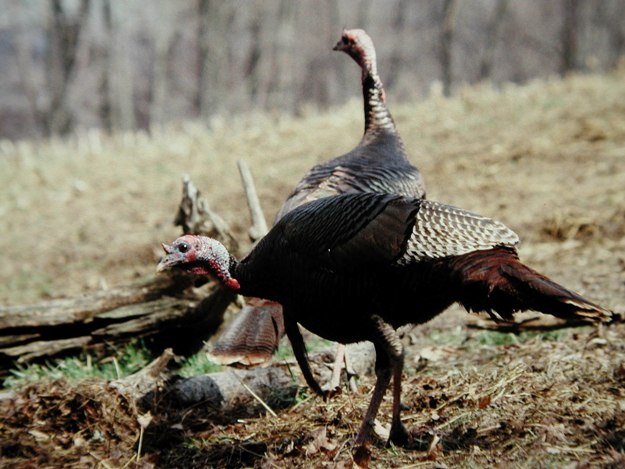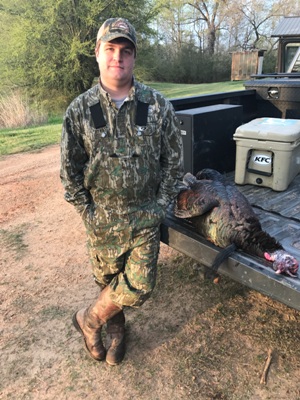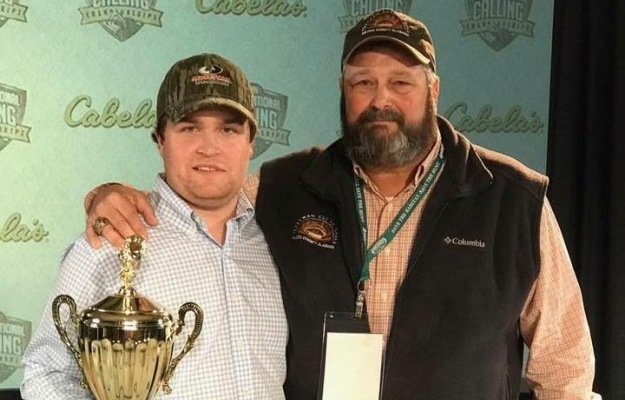
with Calvin Perryman
My second hunt this season was in Wilcox County Alabama. The turkey gobbled one time in a tree about 100 yards from me. So, I moved slowly and quietly to an open area where I could see the turkey when and if he came to me.
Once I got set up, I gave the gobbler some soft tree yelps. Although he didn’t gobble back to me, I could hear him drumming as he strutted in his roost tree.
 Finally, the gobbler pitched out of the tree and landed to my left. I couldn’t see him, because some thick cover was between him and me. This turkey had gobbled early to an owl and then didn’t say another word, but I could hear him drumming as he came toward me. I make my own diaphragm calls, and I put a ghost cut in one of the diaphragms.
Finally, the gobbler pitched out of the tree and landed to my left. I couldn’t see him, because some thick cover was between him and me. This turkey had gobbled early to an owl and then didn’t say another word, but I could hear him drumming as he came toward me. I make my own diaphragm calls, and I put a ghost cut in one of the diaphragms.
The turkey walked through a little bottom to my left, and I had to slide around the tree trunk to get in position to take the shot. I could hear the turkey drumming in the leaves, even though I couldn’t see him. When I heard the turkey drumming behind a big tree in front of me, I moved slowly and quietly to get into position to take the shot. When the bird came over the little rise, I aimed my 20-gauge at his head, and the gobbler went down.
Taking that second turkey with my 20-gauge helped me build my confidence and gave me a lot of satisfaction in the gun and the shells I was shooting. I know that hand-loading a shotgun shell takes quite a bit of time, and it’s a hassle for most hunters. I also know that most hunters don’t shoot a 20-gauge with #9 shot. But throughout the 2017 turkey season, I gained a lot of confidence in the shells I had hand-loaded, the power of the 20-gauge and the knock-down power of those #9 TSS shots.
Day 1: Calvin Perryman Hunts Deep South Turkeys
Tomorrow: How to Find Turkeys without Scouting




























